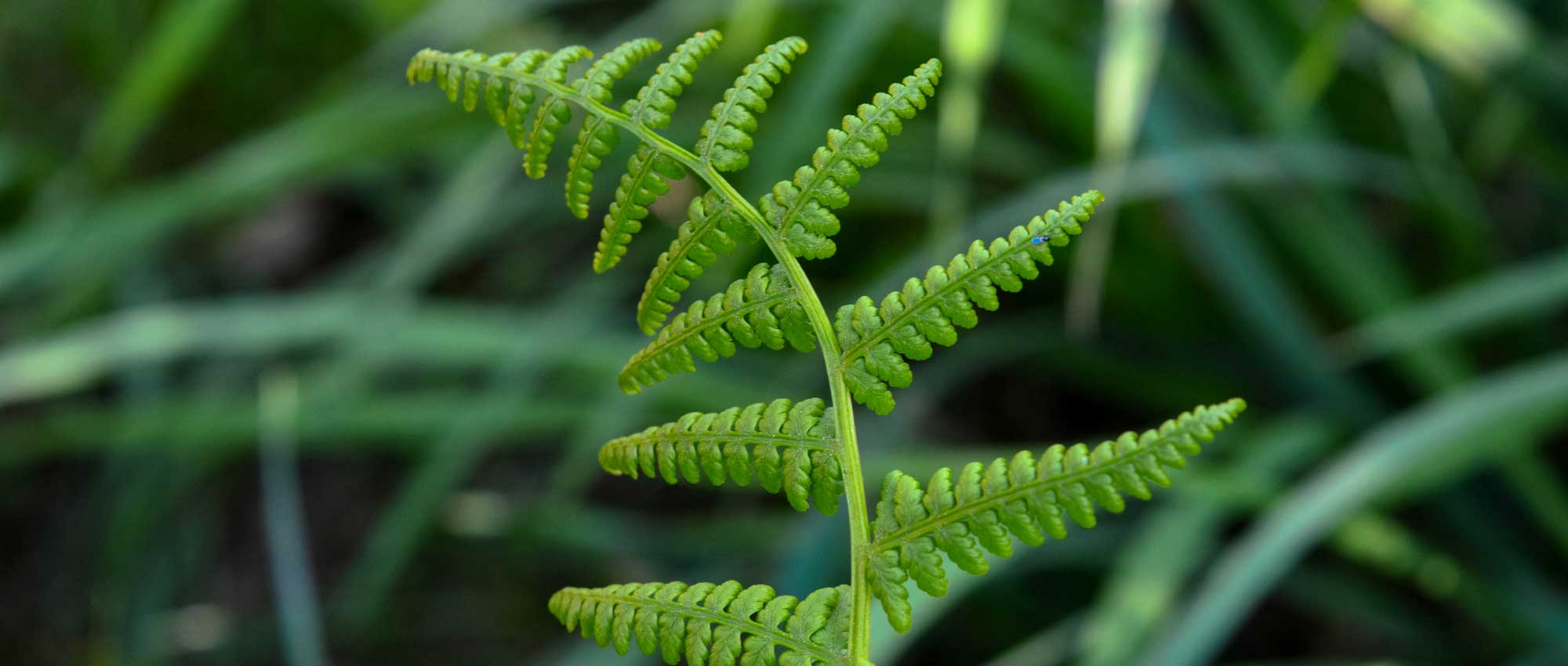
Ferns: 9 easy association ideas to succeed!
for a graphic and natural atmosphere!
Contents
Ferns are deciduous or evergreen plants, decorative for their very graphic foliage. They bring a lot of freshness while creating a wild and natural atmosphere! They can be exuberant or shy, robust or fragile… They easily associate with perennials suited to shade, particularly with the exuberant foliage of hostas. And they pair wonderfully with Tricyrtis! Don’t hesitate to play with contrasts in shapes. Take advantage of the fine and slender foliage of ferns to add volume to your borders. Place them alongside low-growing, ground-covering plants with broad leaves. Ferns create stunning contrasts by highlighting plants with brighter colours! With their light and delicate nature, they blend well with the finesse of astrantia flowers.
When combining ferns, it’s essential to consider their growing conditions related to their natural habitat. Most of them grow wild in forests and prefer cool, shaded, and slightly acidic soils. They will pair well with other understorey plants to elegantly dress the base of trees and bushes. Choose companion plants that thrive in shady and cool situations: Pachysandra, Rodgersia, Luzula, and Wood Hyacinths seem to be good companions. They will add a natural touch to your garden. Ferns also pair very well with bulbous plants, such as erythronium or snowdrops. Discover all our ideas and inspirations for combining them in the garden!
In the underwood, for a natural garden!
As ferns grow naturally in forests, create a woodland garden with them! Just ensure it is bright enough, as they appreciate dappled shade. Take advantage of shaded areas where other plants struggle, or a hard-to-reach spot at the back of the garden… Pair your ferns with other plants that enjoy cool, shady environments, such as Tricyrtis or Epimedium. Cover the ground with a carpet of periwinkles or Eranthis hyemalis. Planted in woodland, ferns will give you the feeling of a true forest walk! You can grow Polypodium vulgare on an old tree trunk. Ferns create a very light and delicate atmosphere when placed alongside other plants with fine foliage, such as grasses, or wild-looking flowers: astrances, tricyrtis, etc.
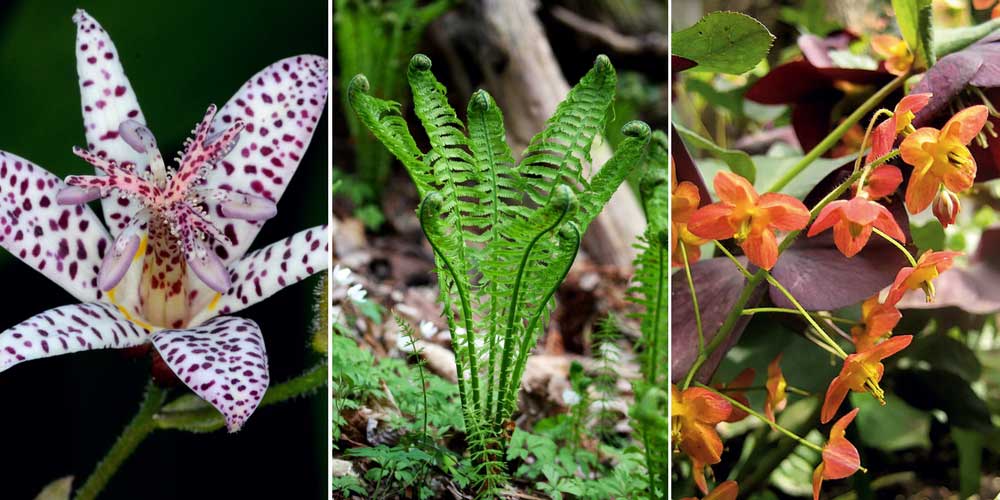
Tricyrtis formosana x hirta, Matteuccia struthiopteris (photo Bjoertvedt) and Epimedium warleyense (photo Chris Mealy)
Read also
Planting arborescent fernsBy the pond edge
Ferns thrive in moist soils: take advantage of this to plant around a pond. Choose royal ferns or ostrich ferns to create a pleasant lush and fresh atmosphere! They are appreciated for their imposing and very elegant appearance. Place alongside them some marginal plants, such as Yellow Flag Iris, as well as candelabra primroses to add small touches of bright colour! For example, enjoy the splendid orange flowering of Primula bulleyana. Add plants with lush foliage, such as that of Gunnera manicata or Hostas.
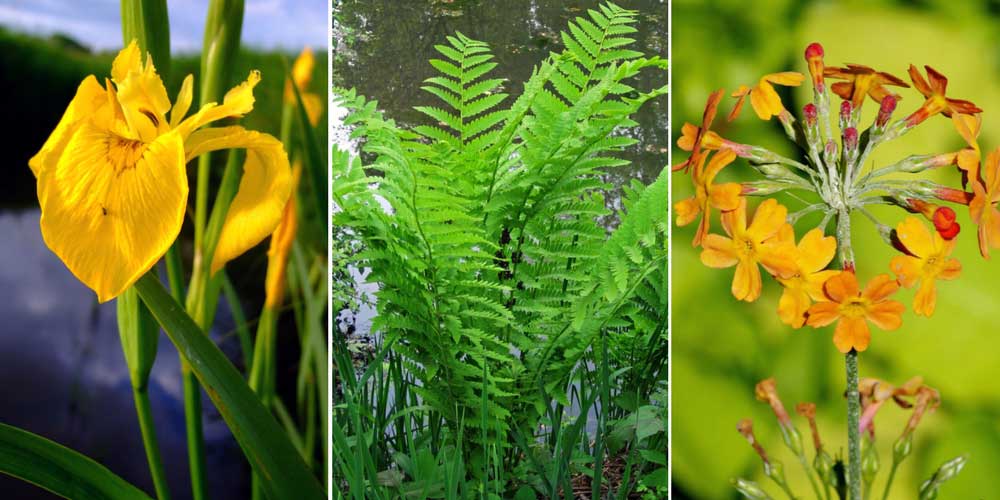
Iris pseudacorus (photo Aiwok), Osmunda claytoniana (photo James St. John) and Primula bulleyana (photo El Grafo)
Discover other Ferns
View all →Available in 1 sizes
Available in 1 sizes
Available in 1 sizes
Available in 1 sizes
Available in 2 sizes
Available in 2 sizes
Available in 2 sizes
Available in 1 sizes
Available in 2 sizes
Available in 2 sizes
In borders, to play with contrasts!
With their long, graphic fronds, ferns create a stunning backdrop for borders. Choose the largest species, such as Dryopteris or Matteuccia, and place a few flowers and ground-cover plants in front of them. Create contrasts in shapes by positioning them alongside shorter plants with a spreading habit or coarser foliage, such as heucheras. Ferns will lighten the border while adding volume and vitality. Moreover, their green foliage will highlight colourful flowering plants, such as hardy geraniums, foxgloves, or bleeding hearts!
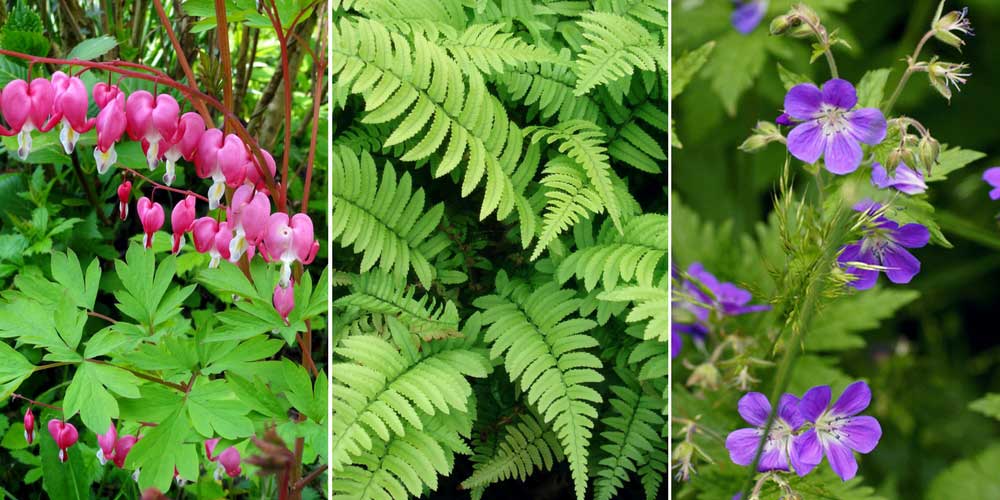
Dicentra spectabilis, Dryopteris cycadina and Geranium sylvaticum ‘Birch Lilac’
Read also
Planting fernsFor a graphic garden!
Enjoy the fine foliage of ferns to create a stunning garden with clean lines. Design a contemporary garden by combining the delicate fronds of ferns with the graphic elements of horsetails, ornamental grasses, or bamboos. You can create a beautiful scene by planting Dryopteris erythrosora alongside Equisetum hyemale, a few maples, and light-coloured grasses like Hakonechloa macra ‘Aureola’. The upright stems of horsetails will add structure and height. You will achieve a very airy garden that appears timeless.
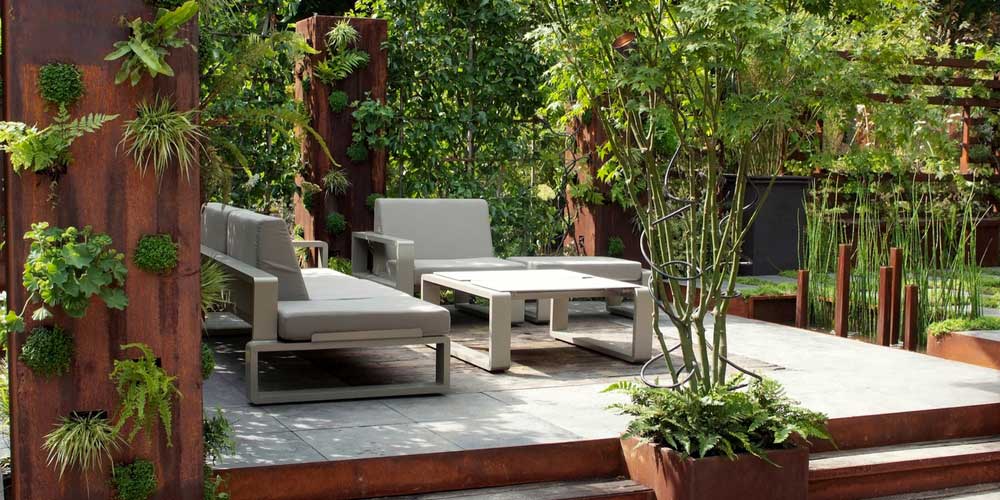
Ferns easily fit into the composition of a graphic garden, for example by combining Japanese maples, horsetails, dryopteris, and installing some small ferns like scolopendria on a green wall with grasses.
In rockery
Compose a cool, shaded rockery by choosing, for example, Asplenium trichomanes or the hart’s-tongue fern (Phyllitis scolopendrium). Scatter a few clumps of Brunnera macrophylla, Saxifraga umbrosa, or dwarf willows alongside them. You can add some small conifers (junipers, Pinus pumila, etc.). If your rockery is sunny, opt instead for Cheilanthes lanosa! This small, drought-resistant fern will thrive in full sun alongside some sedums and grasses like Stipa tenuissima or Festuca glauca.

In a sunny rockery, you can combine Festuca glauca, Cheilanthes lanosa (photo Stan Shebs), and Eryngium planum
On a a low wall
By their timeless nature, the fronds of ferns perfectly complement old stone walls. They add a great deal of charm to them. Some species can thrive with little soil and are relatively drought-resistant… Take advantage of this to green up a wall! Observing ferns in their natural habitat, one notices that some spontaneously settle on walls or in stonework. This is the case with Polypodium vulgare and Phyllitis scolopendrium. Grow them on a shaded wall, alongside Cymbalaria muralis or saxifrages!

For a shaded wall: Cymbalaria muralis (photo Sten Porse), Polypodium vulgare and Saxifraga x urbium (photo Holger Casselmann)
In a pot, on a terrace or balcony
You can green up a terrace or balcony by planting your ferns in pots. We recommend Dryopteris, for example, Dryopteris erythrosora with its stunning red fronds when young. Polystichum polyblepharum can also create a lovely effect in pots. This way, you can enjoy ferns even without a garden! To add a splash of colour, pair them with small bulbous plants, such as Cyclamen, or with pansies.

Cyclamen coum, Polystichum polyblepharum, Viola ‘Sorbet True Blue’
In a Japanese garden
Create a zen garden with a mineral focus. These gardens, with a minimalist spirit, consist of relatively few plants. Design a central space with raked gravel or a pond with koi carp. Place mosses, ground cover plants, and a few ferns on the sides. You might choose, for example, Athyrium niponicum or Dryopteris. For a bit more height, install Japanese maples (Acer palmatum) and cloud-pruned pines. Add a few decorative elements like lanterns. You will achieve a highly structured garden, conducive to meditation and ideal for recharging!

Athyrium niponicum var. pictum ‘Red Beauty’ (photo Stan Shebs), Acer palmatum ‘Orange Dream’ and Cornus kousa ‘Venus’ (photo De Nolf)
In a heather soil bed
As most ferns prefer acidic soils, they easily integrate into a heather soil bed. Choose cyrtomiums (Cyrtomium falcatum or Cyrtomium fortunei) and plant alongside azaleas, Skimmia japonica or Japanese maples. You can add a few clumps of Blechnum spicant, as this small fern enjoys acidic ground!
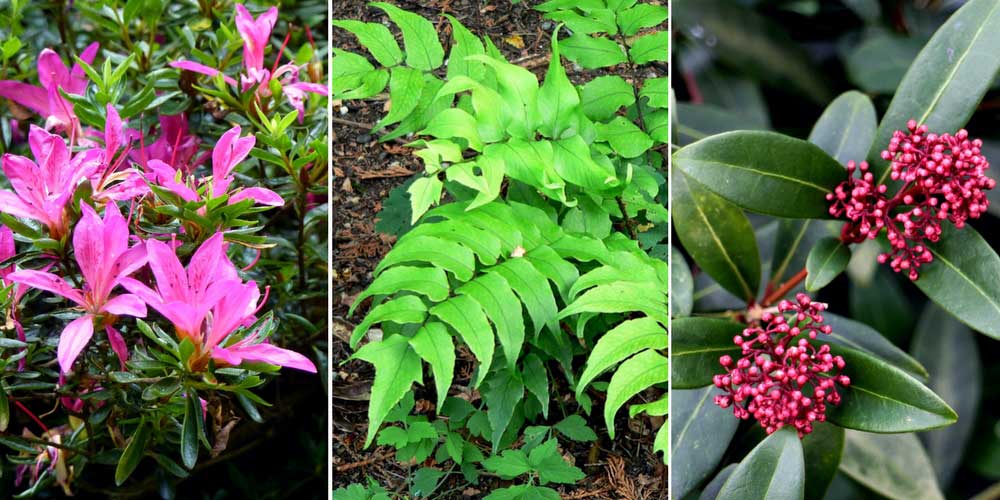
Japanese azalea ‘Shiryou no Homare’, Cyrtomium falcatum (photo Stan Shebs) and Skimmia reevesiana ‘Rubella’ (Dominicus Johannes Bergsma)
- Subscribe!
- Contents
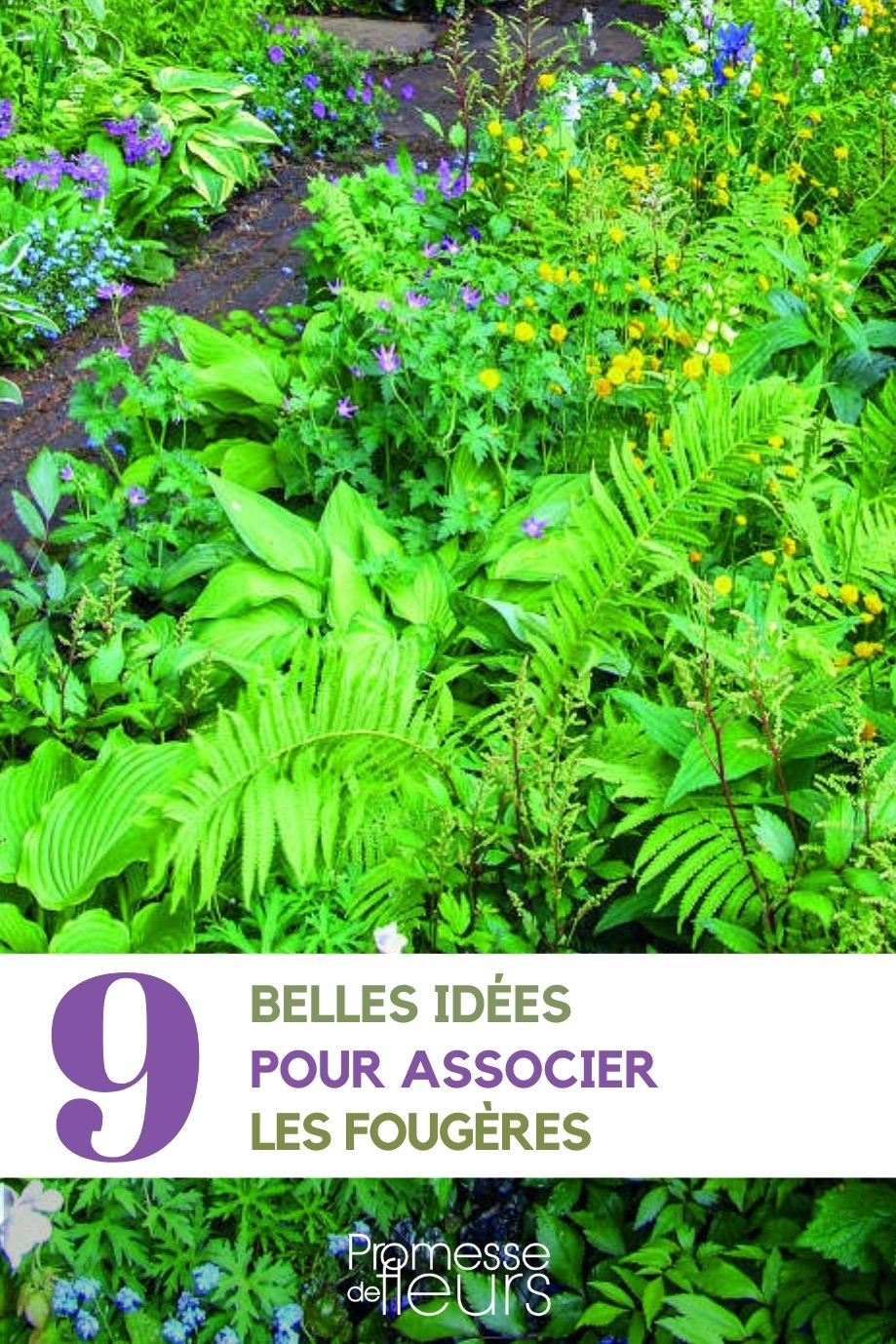
































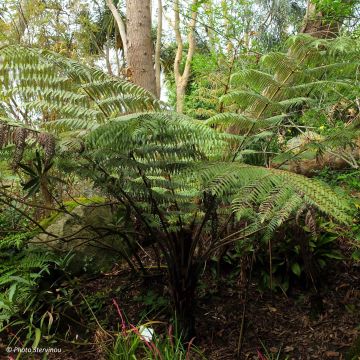
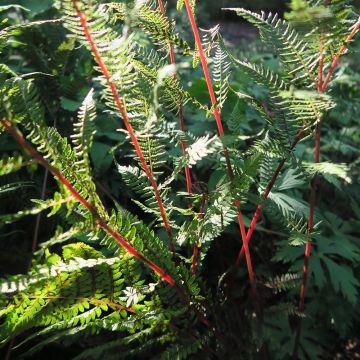
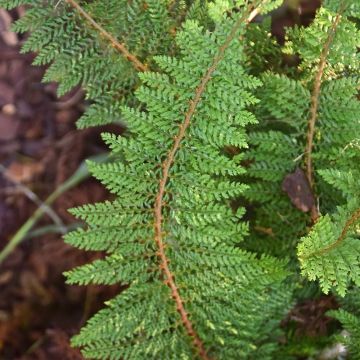
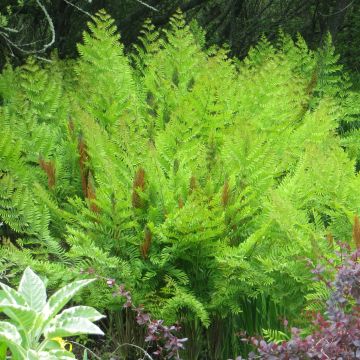
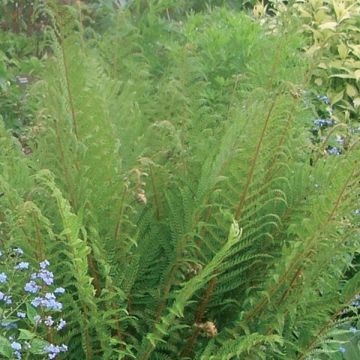

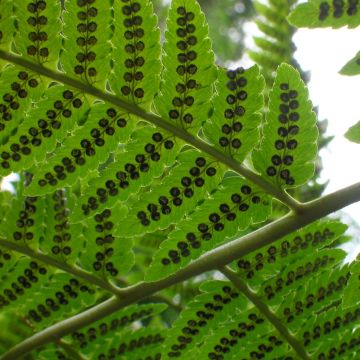
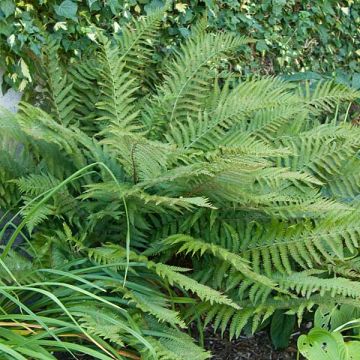

Comments